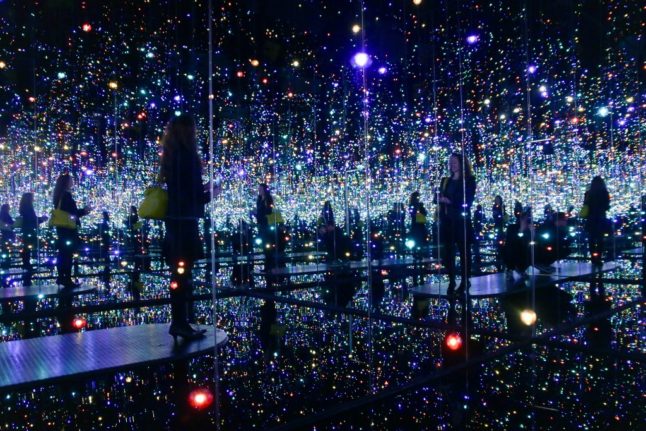Through the gallery window, just off the swanky Rue Faubourg Saint-Honore in Paris, a tree is growing out of the ceiling.
On closer inspection, it turns out the branches, leaves and flowers are made from bronze and rock-crystal, and it is one of dozens of beautiful and bizarre chandeliers in the Regis Mathieu Gallery.
Few tourists would think to visit – often too intimidated to enter the fancy showrooms of private galleries.
But with Paris having emerged from a half-century slumber to once again become a major global art hub, there is renewed focus on the treasures to be seen in the city’s galleries.
“It’s really not the case that they only want people who are buying,” said Zara Sajid, co-founder of Art Heart Tours, which aims to bring more tourists into this cloistered world.
“They open these galleries because they are passionate about art and want to share that passion with as many people as possible.”
The Paris contemporary art scene has partly got its mojo back thanks to a slew of new museums, including the Louis Vuitton Foundation and Bourse de Commerce, built by two rival uber-rich fashion tycoons.
Private galleries are also booming, helped by Brexit which encouraged big names to decamp from London.
“Paris is back at the forefront of the art scene,” said Justine Durrett of Zwirner Gallery, one of a dozen international dealers to open a Paris outpost in recent years.
She credits a “unique dialogue between history and contemporary art” in the city, going beyond fine art to include food, fashion and “the general lifestyle”.
France sells more art than any country apart from the United States – 91,692 works last year, according to Artprice, an analysis firm.
It still turns over less cash than China and Britain, though it is closing the gap with its northern neighbour and surpassed $1 billion in auction sales for the first time in 2021.
The boom has not been without controversy. Many locals were shocked to see their long-running FIAC fair ousted recently from its autumn slot at the Grand Palais in favour of a new Parisian edition of Art Basel, the world’s biggest fair organiser.
Some galleries feared this could see them squeezed out by global competitors, though Art Basel has insisted its new fair will be a thoroughly French affair with a local management team.
In any case, Marion Papillon, who heads a union of the city’s gallerists, is bullish: “Brexit accelerated things but there has been real dynamism: French galleries are exporting more, and becoming more visible internationally,” she told AFP.
This makes for a good time to be guiding people around Parisian galleries.
Art Heart Tours say they have tapped into a big demand, especially among returning tourists who have already ticked the obvious sites off their lists.
“We want to demystify galleries,” co-founder Eric Remmen told AFP.
“We have all these palatial museums in Paris but some of the best art and design is inside these galleries.”
Among the treasures they have seen since starting last May are a large collection of Picasso drawings at the Helene Bailey Gallery, George Baselitz paintings at the Perrotin Secondary Market and designs by late fashion icon Virgil Abloh at Galerie Kreo.
After the chandeliers, Remmen leads AFP to the Kamel Mennour Gallery where a mind-bending €575,000 curved mirror by Anish Kapoor can be found alongside a sculpture by French artist Bertrand Lavier.
“I understand why people are nervous to come in, but my job is to help people discover new things,” said gallery assistant Sidonie Sakhoun, 24.
“Art tells our history and it belongs to all of us, not just collectors.”



 Please whitelist us to continue reading.
Please whitelist us to continue reading.
Member comments